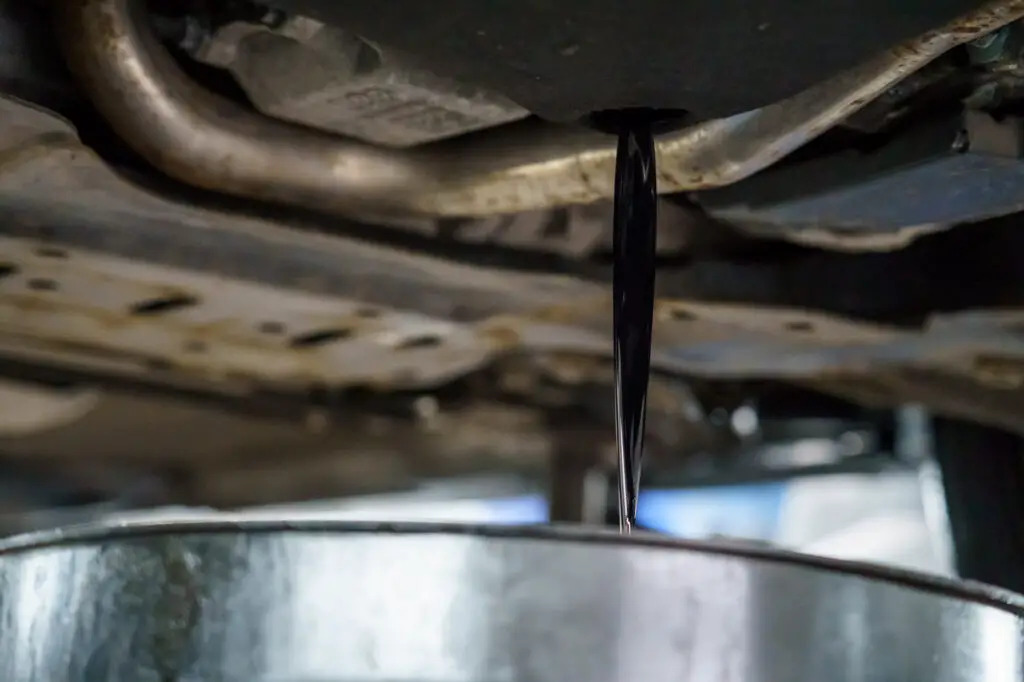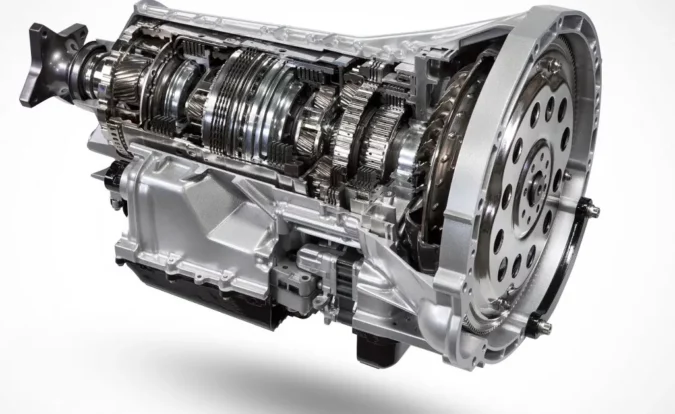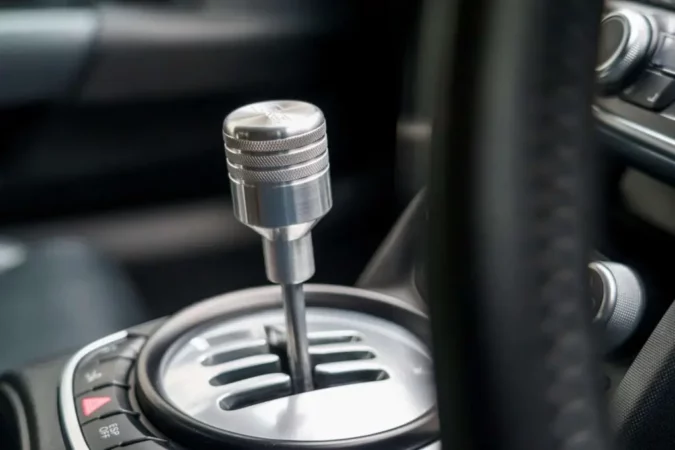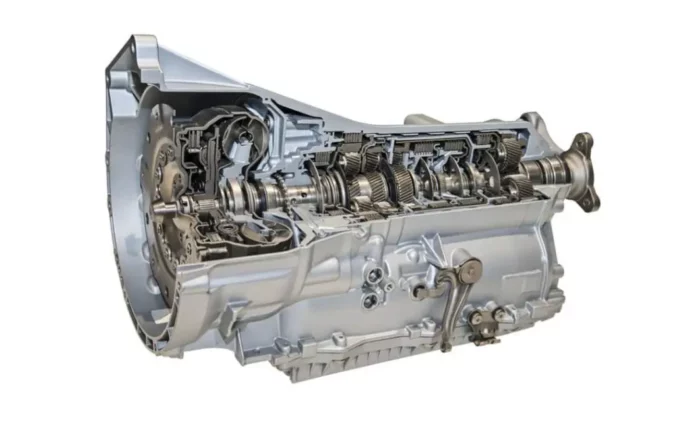Have you been thinking about changing transmission fluid and you don’t know when and how this procedure should be done to your car? Well, if that is the case, then you are in the right place. In this article, we are going to elaborate in detail on everything you need to know.
- Car Transmission
- Transmission Types
- Fluid Types
- Fluid Check
- Flush Interval
- How To Flush
- Cost
- Conclusion
- FAQs
Doing the maintenance on your car is really important. Cars have special intervals for every fluid that your car is using. As well as when it comes to the transmission fluid. And if you want your transmission to last for a really long time, you should follow these intervals. A lot of people are either not aware, or they do these things on purpose.
They just skip the maintenance and drive until something fails. And this is a really bad move. Since in the end, the only person that will pay is the owner. And when it comes to transmissions, this could be in the range of thousands of dollars. That’s the case with how much does it cost to rebuild a transmission.
So, you need to be really aware of the service intervals for your car. But don’t worry. Since you are here, we are going to help you out. First, we are going to learn what is a transmission. Then we will learn the two types of transmissions that are out there and their subtypes.
Once we clear that out of our way, we will cover the types of fluid these transmissions are using and the change interval. Once we cover this, we will move to the topic of changing transmission fluid and see how it’s done. So, if you want to learn more, follow along.
Car Transmission
Before we move to more complex topics like the topic about changing transmission fluid, let’s first learn more about what is a car transmission in general. A lot of people are facing similar issues and want to learn more about the basics. So, let’s further elaborate on them and understand this component a bit better and its core function in the car.
So, what is a transmission? Well, a transmission in simple words is an energy-converting device. This device is converting the rotational force of the crankshaft into torque.
As you probably know, torque is the type of energy that you need in order for your car to pull forward and move. In Europe torque is measured in Newton meters(Nm). While in the US, torque is measured in pound-feet (lb-ft).
As you probably know, the crankshaft of the car is spinning at 600 RPM minimum. And if you try to transfer this rotational force directly to the driveshaft, the driveshaft will simply snap. Thus, necessitating you to pay for the cost to replace a driveshaft. And the engine will get damaged.
So, the transmission is there to convert and transfer this energy in an efficient manner that will allow you to drive the car as you do every day.
Inside, the transmission is full of gears. And every gear has its own purpose. Nowadays, there are transmissions that have up to 9 or 10 gears. It is absolutely stunning to think that in 15 years we would be here.
And the more gears, the more efficient the vehicle is. As well as better comfort for the driver. And this transmission has fluid that makes sure that everything is working smoothly. But what about changing transmission fluid? More on that, we will cover in a moment.
Types Of Transmissions
So, we discussed the basics of automotive transmissions, now let’s take a look at what are the main types of transmissions in cars that are out there.
There are two main types and some subtypes. In the following two chapters, we are going to cover them in detail and learn more about their method of work. And then we will discuss about the type of fluid they use and about changing transmission fluid.
Manual Transmission
Before we start learning about changing transmission fluid, let’s take a look at the first type of transmission that is there. And this is the manual transmission. So, what is a manual transmission?
Well, a manual transmission is a type of transmission where the driver goes through the gears manually.
For this purpose, there is a clutch installed between the transmission and the car’s flex plate. And the driver has to press the clutch, so the transmission disengages from the engine and then changes a gear.
This type of transmission is mostly used on cheap economy cars here in the US. Even though in Europe and elsewhere in the world, the manual is the transmission of choice.
This is the case because even though it is labor-intensive to change gears, manual transmissions are pretty much bulletproof.
They require less maintenance and are also cheaper to replace. But what about changing transmission fluid and the transmission service cost? On that, we are going to elaborate in a bit. Now let’s cover the second type of transmission that is widely used.
Automatic Transmissions
The second type of transmission fluid (such as the one used in the 2014 Ford Fusion transmission fluid) that we are going to cover before learning about changing transmission fluid and transmission flush is the automatic transmission.
So, what is an automatic? Automatic transmission is a type of transmission where the transmission itself is going through the gears based on the throttle input from the driver.
Automatics are pretty ingenious devices since they replace the complexity of usage with complexity in the design.
So, an automatic transmission has many parts and is a very complex device because they use complex gearing. As well as a complex set of solenoids and a valve body in which transmission fluid is pushed constantly.
As you probably assume, automatics are hydraulic devices. They run on hydraulic fluid, also known as automatic transmission fluid or ATF. This red fluid does all the magic when it comes to changing gears up and down. But more on the type of fluid we will cover in a bit.
What is important to note is that there are a few subtypes of automatics that exist. The first type is the most frequent one. This is the torque converter automatic. This is basically an automatic transmission with a fluid coupling device known as a torque converter.
But there are also other types. The second most common type is the CVT. The CVT or continuously variable transmission does not work with gears. But it works with a steel belt that rotates around two pulleys.
This gives this transmission an infinite number of gear ratios. But the downside is that these transmissions do not last a lot.
The other type is a dual-clutch transmission, also known as DCT. These transmissions use two clutches and even gear sets. Very popular when it comes to high-performance applications. But what about changing transmission fluid? More about that, we will cover it in a bit.
Types Of Fluids Used In Transmissions
Now let’s discuss more about the types of transmission fluid that are used out there. Knowing this information is really important since manuals and automatics use different types of fluid.
So, let’s cover the types of fluid these transmissions use before we dive into changing transmission fluid and how this procedure is done on a car.
Manual Transmission Fluid
Let’s begin first with the manual transmission fluid before we dive into changing transmission fluid. What type of fluid manual transmissions are using?
Well, manual transmissions use a fluid known as gear lube or gear oil as some people call it. This is a different type of fluid compared to ATF used on automatics.
Gear lube in general is the same as your motor oil. But a lot thicker. The viscosity of this fluid is 75W-00. So, you can imagine how thick this fluid is.
Back in the day, cars used conventional gear lube. But nowadays more and more popular is synthetic gear lube.
This type of lube basically lasts forever on your car. So, in most manual cars nowadays (once you’ve figured out how to drive a manual car), you will never have to replace this fluid.
Nevertheless, this type of fluid has only one purpose. And that is to lubricate parts and prevent wear. While on the other hand, the fluid in the automatic transmission has a lot of other roles that it has to play. But what is the favorite manual transmission fluid out there?
One of the most popular products out there is definitely the Red Line SAE 75W80 Manual Transmission and Transaxle Lubricant. This fluid has a rating of 4.9 stars on Amazon and more than 775 ratings.
Automatic Transmission Fluid
The next type of fluid that we are going to cover is much more complicated to understand. And this is the ATF, also known as automatic transmission fluid. So, what is ATF?
Well, ATF is simply a hydraulic fluid. As we noted previously, automatic transmissions are hydraulic devices where the fluid plays a big role in their work. So, why this fluid specifically?
This fluid was chosen specifically because it does not compress. If you put engine oil or gear oil, this would not work since the oil will get easily damaged and will basically burn.
But ATF won’t. No matter how try, you can’t compress this fluid. This makes it perfect for usage in hydraulic systems.
But the important application here is the transmission. And specifically, the fluid that is used on these transmissions is known as ATF. This transmission fluid is red in color (unless you have burnt transmission fluid). The most popular transmission fluid out there if you have a classical torque converter automatic is the Valvoline Multi-Vehicle ATF Fully Synthetic Fluid.
When it comes to CVT automatics, it is worth noting that you cannot use the same fluid. For this purpose, you will need a specifically designed fluid for CVT automatics. And the most popular CVT transmission fluid is the Castrol Transmax ATF.
Dual-clutch transmissions also require a different type of fluid. This type of fluid is not like your ordinary ATF. It has some improvements, mainly to prevent a transmission shudder, as well as to prevent wear and tear inside of the transmission. The most popular choice is the Valvoline Dual Clutch Transmission Fluid.
Transmission Fluid Dipstick
Now that we covered the types of fluid, before we learn more about changing transmission fluid, let’s further elaborate more about the ways you can check the fluid on your car. Checking this fluid is really important in order for you to be able to tell if you need a transmission service. So, how you can check this type of fluid?
When it comes to manual transmissions, as well as some CVT automatics, unfortunately, you cannot check the fluid. This is the case because these transmissions do not have a dipstick installed on them. So, no dipstick, there is no way to check. In this case, you need to rely on the replacement interval recommended by the factory.
But when it comes to torque converter automatics, there is a way to check the level. There is a special dipstick that is installed.
This dipstick is usually located close to the firewall from the passenger’s side. The lever is either orange or yellow.
You just pull this dipstick and check the fluid. But what is worth noting is that you cannot check this fluid whenever you want. There should be special conditions that need to be met in order for you to be successful at this task. Another way, you will get a false reading.
So, the key thing here is to run the engine and drive the car a few miles across the block. Once the gearbox and the fluid are warmed up, you can remove the dipstick and check the level of the fluid inside. For more references, check out our guide on whether to check the transmission fluid when it’s hot or cold.
Make sure that the level is at the recommended limit. But also, avoiding issues where there’s too much transmission fluid in your car. If you notice the symptoms of low transmission fluid, just top it off. But what about changing transmission fluid, when you should change it? More about that next.
Transmission Fluid Change Interval
Now that we learned more about the types of fluid that are used in different transmissions. As well as how to check the fluid level. We can move on and learn more about the recommended interval when it comes to changing transmission fluid. When you should change the fluid in your car?
Well, this really depends on the type of gearbox that you are using. For example, if you use a manual transmission, you don’t have to replace the fluid. Most carmakers do not have an interval for this type of fluid. Transmissions are filled and this fluid is meant to last for life.
But we still recommend changing the fluid in your manual. Somewhere in the range of 80,000 to 100,000 miles is recommended to do an oil change. Just for a good measure. There could be some metal particles that can get stuck and ruin your transmission. So, you should change it at least once during the life of the car. This rule is also for some of the CVT automatics.
But when it comes to classic torque converter automatic transmission, it is recommended that you flush the fluid every 30,000 to 60,000 miles.
By doing your transmission flush regularly, you will get the most out of the life of your transmission. So, it is important that you stick to the intervals that are recommended by the factory. Or by inspection of the quality of the fluid.
A clean fluid should not have any contaminants. While dirty fluid has a lot of these contaminants. And if the fluid is dirty, you should consider changing the transmission fluid. But how you can change? More about that, we are going to learn next.
Changing Transmission Fluid On A Manual
Now finally, let’s take a look at changing transmission fluid. How this job is done on a manual and how it is done on an automatic. For this chapter, we will only stick to the manual transmissions.
And changing this fluid on a manual is rather simple. The only need you have to do is to jack up the car in the air and make sure that it is safely secured, so you can crawl underneath the vehicle.
Then once you do that, you can first locate the bolt for topping off and the bolt for draining the fluid. The bolt for topping off the fluid should be located on the side, while the drain bolt at the bottom.
First, you need to remove the bolt for topping off the fluid. And once you do that, remove the drain bolt. Once you did that, you can allow the old fluid to leak out.
Once everything is completed, you can tighten up the drain bolt. And move on to topping off the fluid. For this, you will need a pump to pump the new fluid in the transmission. Just pump the fluid into the transmission.
And once the transmission fluid starts to leak from the hole, the transmission is full. Just tighten up the bolt and call it a day. More on how you can do this, you can check in the video.
Changing Transmission Fluid On An Automatic
Changing transmission fluid on an automatic is a bit different compared to a manual transmission. So, let’s elaborate more on the key differences in this process.
The first thing you want to do is to jack up the car in the air and drop the oil pan for the transmission. Some transmissions have drain bolts, while some do not have a bolt. You will have to drop the whole pan with the fluid in 99% of the cases.
Once you did that, just remove the filter and wipe down the oil pan and clean any RTV or gasket material both on the transmission and on the pan.
Then, replace the filter, add the gasket and a generous amount of RTV, and mount the pan. Tighten everything up to spec.
Once the pan is bolted on, you can top off the fluid. And for this purpose, there is a bolt on the side of the transmission. Just remove the bolt and pump the new fluid in. Once the fluid starts to leak, it means that you have enough fluid.
Check the level with the dipstick (if you need some help, check out our explainer on how to check the transmission fluid). If there is a lack of fluid, add a bit more until you reach the normal level. That’s it, job done.
Transmission Fluid Change Cost
We learned about changing transmission fluid, now let’s take a look at the cost involved in this type of work. How expensive it is to replace the fluid in your car? In other words, how much is a transmission fluid change going to cost?
The average cost is somewhere in the range of $125 and $350. The cost varies because some transmissions have more complex maintenance procedures. And some require more fluid. More fluid equals more money. So, you should be prepared for this.
Changing Transmission Fluid: In Conclusion…
In this article, we have covered quite a bit when it comes to transmissions. First, we learned what is a gearbox and the different types. Then we covered the types of fluid they use and the intervals they require for changing this fluid.
Once we cleared that out of our way, we learned about changing transmission fluid and how this procedure is done both on manual and automatic cars.
Frequently Asked Questions
Now let’s answer some frequently asked questions.
What Transmission Do I Have
You can check this by inspecting the gear lever. If there is only drive, park, and reverse, you have an automatic. If you have 5 or 6 different gears, you have a manual. Also, manual cars have one extra pedal for the clutch. So, in total, three pedals, while automatics have only two.
What Does Transmission Fluid Do
In manual transmission cars, this fluid only lubricates the transmission. While in automatic cars, this transmission not only lubricates the components. But it also acts as a hydraulic fluid. And this fluid is crucial when it comes to proper shifting. If the fluid is old and dirty could cause a situation like shudder, or slipping gears.
What Color Is Transmission Fluid
ATF or automatic transmission fluid is always red in color. For manual transmissions, the color of the fluid can be different. But for automatics is always red.
Why Check Transmission Fluid When Engine Is Running
This is necessary because you have a fluid coupling device known as a torque converter. So, the torque converter has to be working in order for you to get a proper reading. If the engine is not running, you will get a false reading.
How To Drain Transmission Fluid
When it comes to automatic transmissions, you will have to drop the pan of the transmission. Then replace the filter and gasket and reinstall the pan. Then top off the transmission with new fluid and you will be good.
Where To Put Transmission Fluid
There is a special bolt located on the side of the transmission. Adding this fluid on FWD cars is a really straightforward job since the bolt is accessible. While on RWD cars, you will either have to add the oil from underneath the car, or from the dipstick tube.




